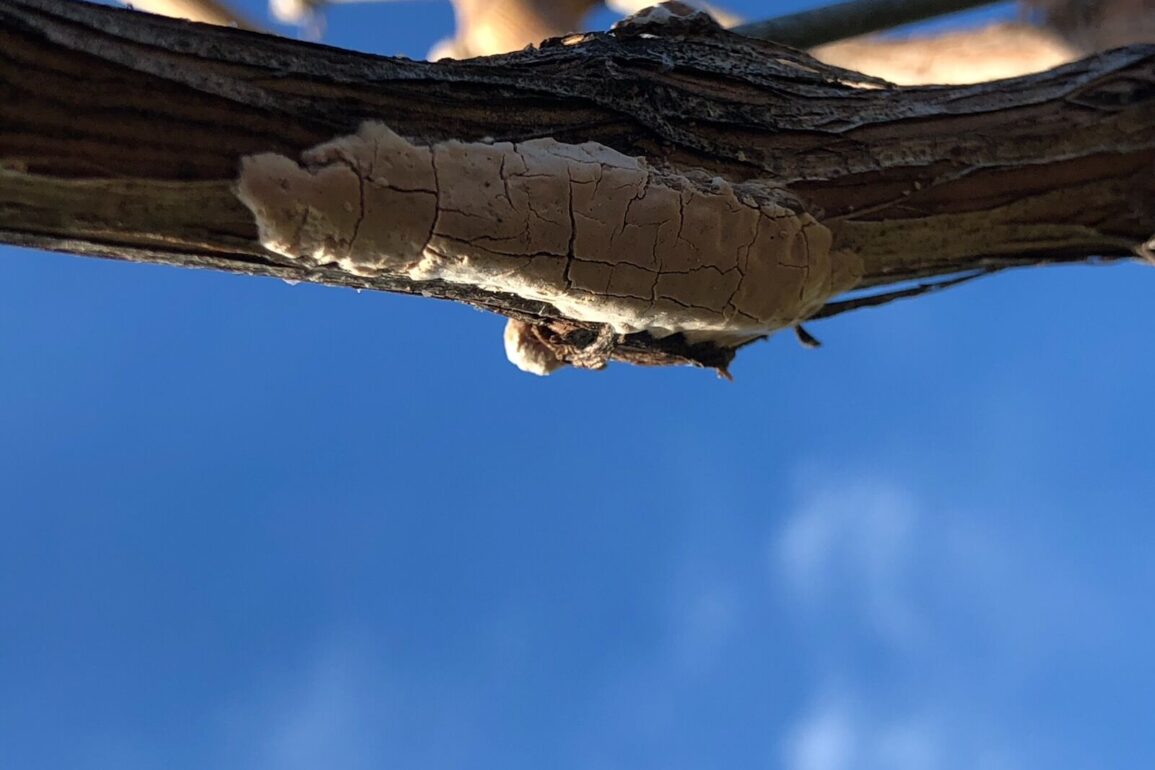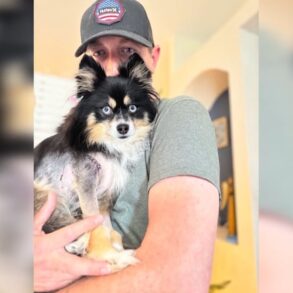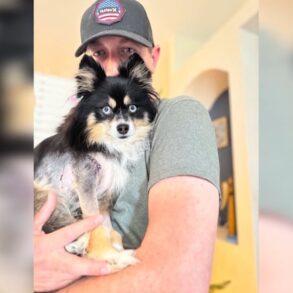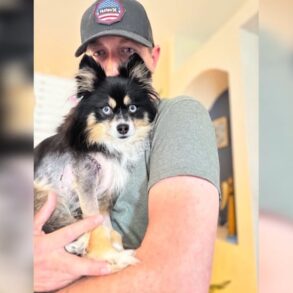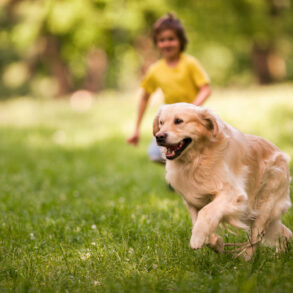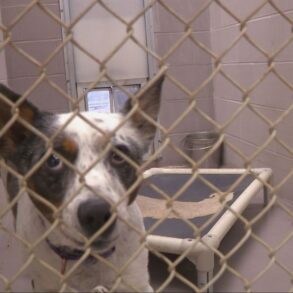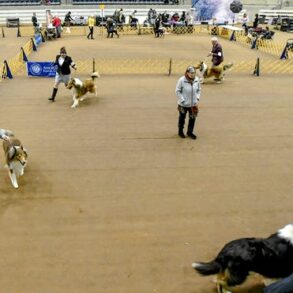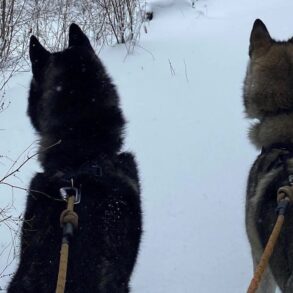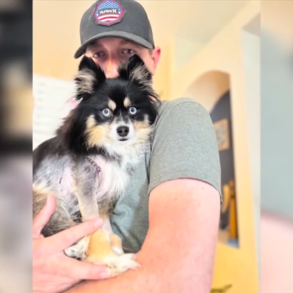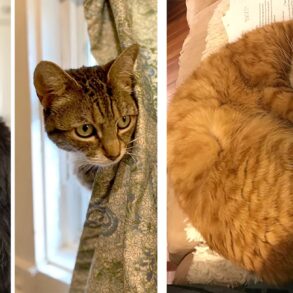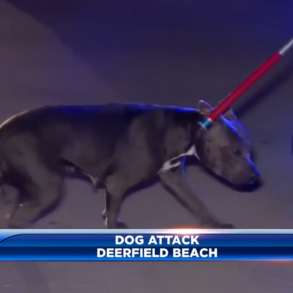The spotted lanternfly is a threat to grapes, apples, hops, and maple and walnut trees
A Cornell University study found that trained dogs – a Labrador retriever and a Belgian Malinois – were better than humans at detecting egg masses in forested areas near vineyards, while people spotted them better than the dogs in vineyards. (Courtesy photo)
ITHACA, N.Y. — Growers and conservationists have a new weapon to detect invasive spotted lanternflies early and limit their spread: dogs trained to sniff out egg masses that overwinter in vineyards and forests.
A Cornell University study found that trained dogs – a Labrador retriever and a Belgian Malinois – were better than humans at detecting egg masses in forested areas near vineyards, while people spotted them better than the dogs in vineyards.
The spotted lanternfly, which was first detected in Pennsylvania in 2014, has since spread to 18 other states, including New York. It’s a threat to grapes, apples, hops, and maple and walnut trees.
“A spotted lanternfly infestation in a vineyard can cause 80% to 100% mortality of the vines in one growing season,” said Angela Fuller, the paper’s author and professor in the Department of Natural Resources and the Environment.
Infestations also increase the amount of insecticide that growers need to use, which can increase costs by up to 170% in a growing season, Fuller said.
Fuller and colleagues chose 20 vineyards in Pennsylvania and New Jersey known to have lanternfly infestations. They then mapped out transects along grape rows and in adjacent forests. Humans surveyed for egg masses one day, while leashed dogs with a human handler scanned the same transects on separate days, so human scents didn’t influence the dogs.
People detected 1.8 times more egg masses than dogs in vineyards, where female adult lanternflies lay eggs on vines and support poles. “It was pretty easy for humans to see them, because they can do a systematic search, up and down a vine or pole,” Fuller said. Humans found 31 egg masses per hour versus 24 egg masses per hour for dogs.
In adjacent forests, where many spotted lanternflies overwinter and then emerge to infect vineyards, dogs had 3.4 times more detections than humans. “The dogs find egg masses by smell,” Fuller said. “So, in a very complex environment, it’s easier for a dog to smell something than it is for a human to see something that is small and cryptic.”
In forests, dogs found 7.6 egg masses per hour versus 6.7 per hour for humans. However, the dogs spent more time searching than humans, so overall, dogs found many more egg masses than humans in forests. “The extra time that dogs take to find them is not as important as it is to find them in the first place, because you need to detect the egg masses in order to eradicate them,” Fuller said.
The New York Invasive Species Research Institute co-led the study.
For additional information, read this Cornell Chronicle story.
Cornell University has dedicated television and audio studios available for media interviews.
–Cornell Chronicle
This post was originally published on this site be sure to check out more of their content.

